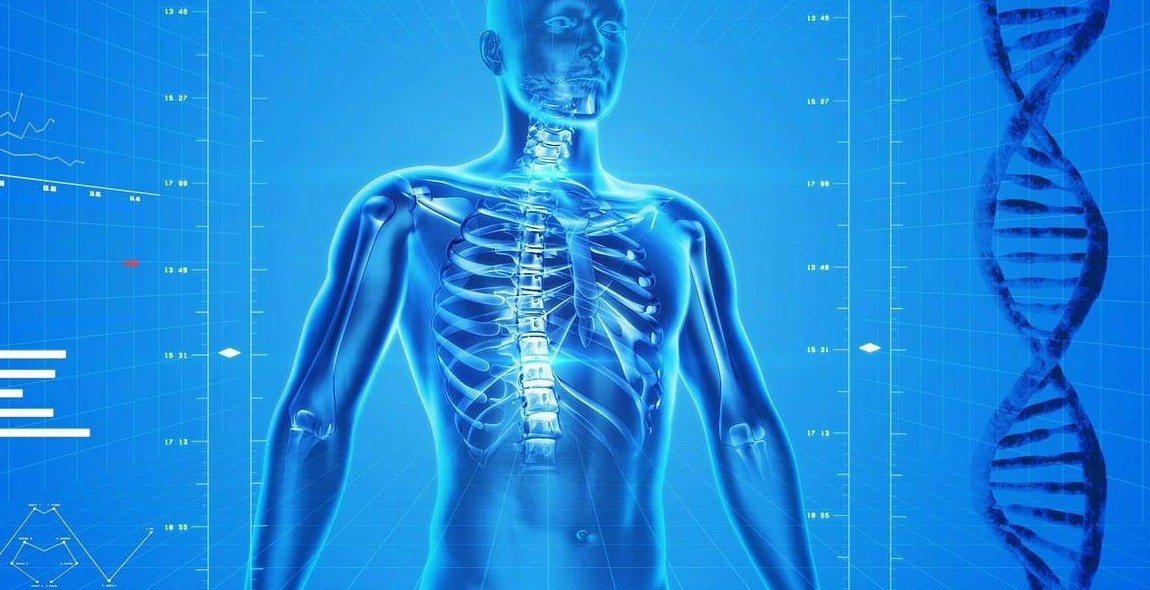How to Understand the Human Body: A Beginner’s Guide to Anatomy and Physiology
The human body is a complex machine that scientists and medical professionals are constantly learning more about. Understanding anatomy and physiology is essential for anyone interested in health and wellness, as well as those pursuing careers in healthcare. Whether you are a student, healthcare professional, or simply curious about the human body, this beginner’s guide to anatomy and physiology will provide you with the foundational knowledge you need to understand the inner workings of the human body.
What is Anatomy?
Anatomy is the study of the structure and organization of living organisms. In the context of the human body, anatomy refers to the study of the structure and organization of the body’s organs, tissues, and systems. This includes understanding the physical characteristics of organs, such as their size, shape, and location within the body.
What is Physiology?
Physiology is the study of how living organisms function. In the context of the human body, physiology refers to the study of how the body’s organs, tissues, and systems work together to maintain homeostasis, or a state of balance within the body. This includes understanding how different systems, such as the nervous system and cardiovascular system, interact with each other to regulate bodily functions.
This guide will provide an overview of the major systems in the human body, including the musculoskeletal, cardiovascular, respiratory, digestive, and nervous systems. It will also cover important topics such as cell biology, genetics, and the immune system. By the end of this guide, you will have a solid foundation in anatomy and physiology that will serve as a starting point for further study and exploration.

Understanding Anatomy
Anatomy is the study of the structure and organization of living organisms. It is a branch of biology that deals with the physical and chemical structure of living things. In this article, we will be focusing on the human body and its anatomy.
The Skeletal System
The skeletal system is the framework of the human body. It consists of bones, joints, and cartilage. The bones in the skeletal system provide support for the body, protect internal organs, and allow for movement. Joints are the points where bones meet, and they allow for movement. Cartilage is a rubbery tissue that covers the ends of bones and helps reduce friction between them.
The human skeleton is made up of 206 bones. These bones are divided into two categories: axial and appendicular. The axial skeleton includes the skull, vertebral column, and rib cage. The appendicular skeleton includes the limbs and the girdles that attach the limbs to the axial skeleton.
The skeletal system also plays a role in the production of blood cells, the storage of minerals, and the regulation of hormones.
The Muscular System
The muscular system is responsible for movement and stability. It is made up of muscles, tendons, and ligaments. Muscles are the tissues that contract and relax to produce movement. Tendons are the fibrous tissues that attach muscles to bones. Ligaments are the tough, fibrous tissues that connect bones to other bones.
The human body has over 600 muscles. These muscles are divided into three types: skeletal, smooth, and cardiac. Skeletal muscles are attached to bones and are responsible for voluntary movement. Smooth muscles are found in the walls of internal organs and are responsible for involuntary movement. Cardiac muscles are found in the heart and are responsible for pumping blood.
The Nervous System
The nervous system is responsible for communication and control. It is made up of the brain, spinal cord, and nerves. The brain is the control center of the nervous system. It receives and processes information from the senses and sends out signals to the rest of the body. The spinal cord is a long, thin bundle of nerves that runs from the brain to the rest of the body. Nerves are the fibers that transmit signals between the brain, spinal cord, and the rest of the body.
The nervous system is divided into two main parts: the central nervous system (CNS) and the peripheral nervous system (PNS). The CNS includes the brain and spinal cord. The PNS includes all of the nerves outside of the CNS. The PNS is further divided into two parts: the somatic nervous system and the autonomic nervous system. The somatic nervous system controls voluntary movements, while the autonomic nervous system controls involuntary actions, such as heartbeat and digestion.
| System | Main Components | Main Functions |
|---|---|---|
| Skeletal | Bones, joints, cartilage | Support, protection, movement, blood cell production, mineral storage, hormone regulation |
| Muscular | Muscles, tendons, ligaments | Movement, stability |
| Nervous | Brain, spinal cord, nerves | Communication, control |

Physiology
Physiology is the study of how the human body functions. It is the science that deals with the normal functioning of living organisms and their parts. Physiology is a complex field that involves the study of various systems and functions of the human body. Understanding the physiology of the human body is essential for maintaining good health and preventing diseases. In this section, we will discuss some of the major systems of the human body and their functions.
The Cardiovascular System
The cardiovascular system is responsible for the circulation of blood throughout the body. It consists of the heart, blood vessels, and blood. The heart is a muscular organ that pumps blood to the lungs and to the rest of the body. The blood vessels, which include arteries, veins, and capillaries, transport blood to and from the heart and other organs. The blood carries oxygen, nutrients, and waste products to and from the cells of the body. The cardiovascular system is essential for maintaining the body’s homeostasis.
The Respiratory System
The respiratory system is responsible for the exchange of gases between the body and the environment. It consists of the lungs, trachea, bronchi, and alveoli. The lungs are the primary organs of the respiratory system and are responsible for taking in oxygen and expelling carbon dioxide. The trachea, bronchi, and alveoli are responsible for transporting air to and from the lungs. The respiratory system is essential for maintaining the body’s homeostasis by regulating the levels of oxygen and carbon dioxide in the blood.
The Digestive System
The digestive system is responsible for breaking down food into nutrients that can be absorbed by the body. It consists of the mouth, esophagus, stomach, small intestine, large intestine, rectum, and anus. The mouth, esophagus, and stomach are responsible for breaking down food into smaller particles. The small intestine is responsible for absorbing nutrients, while the large intestine is responsible for absorbing water and eliminating waste products. The digestive system is essential for maintaining the body’s homeostasis by providing the body with the nutrients it needs to function.
The Endocrine System
The endocrine system is responsible for producing and secreting hormones that regulate various functions of the body. It consists of glands such as the pituitary gland, thyroid gland, adrenal gland, and pancreas. Hormones are chemical messengers that regulate processes such as growth, metabolism, and reproduction. The endocrine system is essential for maintaining the body’s homeostasis by regulating the levels of hormones in the blood.
Conclusion
In conclusion, understanding the physiology of the human body is essential for maintaining good health and preventing diseases. The cardiovascular system, respiratory system, digestive system, and endocrine system are all essential for maintaining the body’s homeostasis. By understanding how these systems function, we can make better decisions about our health and well-being.

Conclusion
Understanding the human body is crucial for living a healthy and fulfilling life. By learning about anatomy and physiology, you can gain a deeper appreciation for how your body works and how to take care of it.
In this beginner’s guide, we’ve covered the basics of the human body, including the skeletal, muscular, digestive, circulatory, and nervous systems. We’ve also explored some common medical terms and concepts that are essential for understanding the human body.
Remember, learning about the human body is an ongoing process, and there is always more to discover. Whether you’re interested in pursuing a career in healthcare, or simply want to improve your own health and wellbeing, understanding the human body is a vital first step.
Tips for Further Learning
- Take an anatomy and physiology course at a local community college or online.
- Read books and articles about the human body from reputable sources.
- Watch educational videos and documentaries about the human body.
- Join a local health or fitness group to learn more about how to take care of your body.
By continuing to learn about the human body, you can gain a deeper understanding of yourself and the world around you. So keep exploring and never stop learning!
